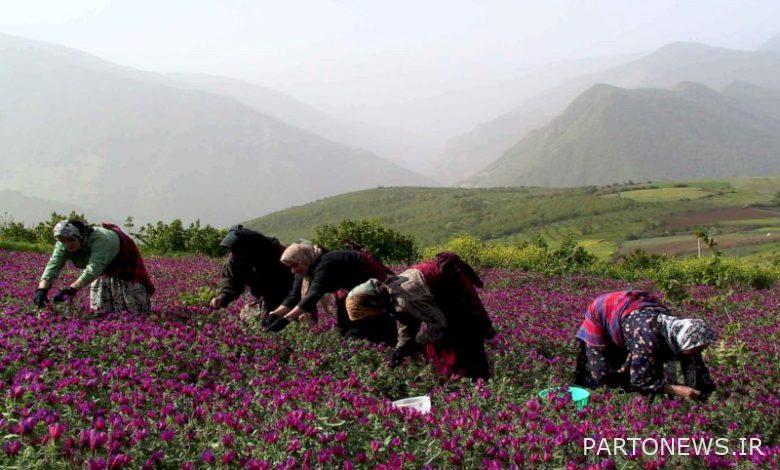An Attitude on the Identifying Elements of Agricultural Heritage in Guilan Province

The basis of the agricultural industry has always been based on two parts: growing crops and raising livestock products, but in recent years a new concept called agricultural heritage has been added to the agricultural literature, which mainly refers to aspects of farmers’ lifestyles, production and agricultural activities. has it. Some scholars have also defined agricultural heritage as the cultural heritage of the “rural way of life”.
Therefore, agricultural heritage includes tangible and intangible aspects of heritage in the agricultural sector. Although it is difficult to distinguish between the tangible and the intangible, the tangible aspect of agricultural heritage can include landscapes, natural landscapes of rural and rural environments, indigenous buildings and settlements, traditional agricultural implements used, and indigenous water supply systems. The spirituality of agricultural heritage also referred to customs, traditions, traditions and celebrations related to agriculture, arts, indigenous knowledge used to carry out agricultural activities, and the like.
Due to the diversity of geographical environment (plains, foothills and mountains), in Gilan province, in addition to natural attractions, food diversity and oral literature, we can also rely on agriculture and its spiritual heritage, which attracts tourists; Therefore, it is necessary to examine the role that vast resources of agricultural heritage can play in the development of tourism. Today, tourists seek to create a rich and memorable experience. In this type of tourism activity, services and facilities provided to tourists are provided by farmers or their families. They may stay in traditional rural accommodation or on a farm in the farmer’s home with their family and enjoy traditional and local food and farmers’ produce, or they may choose bed and breakfast accommodation. Use farm animals for transportation, or participate in cultural events with farming families, engage in fishing activities, or go hiking and hiking. Therefore, the diversity of this tourism activity is wide and it is a combination of cultural and natural activities.
Gilan province, due to its suitable natural conditions, has provided a favorable situation for the residents of rural areas to exploit water and soil resources such as agriculture, animal husbandry, fishing, horticulture and tourism. These villages have an advantage in some agricultural products because they are not cultivated in other regions. The type of indigenous cultivation product, tools and facilities and in general the methods of planting, holding and harvesting are usually used as attractions to enjoy and fill leisure time, education and research of tourists. In this way, the tourist gets acquainted with the cultivation and harvesting of the crop and even the process of its by-products by attending the farms. Tea, rice, citrus fruits, borage, hazelnuts and other products in the exchange of trade and commercial activities of the people of the region, are always decisive categories for the livelihood of the people and at the same time, affect the flow of domestic and foreign economic relations. Silkworm breeding and fishing is another development axis in Gilan.
In May, farmers are getting ready. Tea growers to pick green tea leaves, paddy farmers to plant paddy fields and wheat farmers to plant spring crops, all of which depict beautiful and unspoiled landscapes on farms across the province that can be used to develop tourism. کرد. Tea tourism, as an integrated activity, brings rural areas to a level of development economically. This type of tourism can include learning the science of tea, helping farmers pick tea leaves, how to dry and turn green tea into black in tea factories, tasting tea, watching and walking, which can be provided by providing conditions and facilities to travel to tea-producing villages. Made this type of tourism feasible.
The number of tea harvests (tea tea in the local language) is four, which starts in mid-May and continues until mid-November, and the distance between each harvest and the next stage (next harvest) is between 40 to 45 days. This means that many tourists can be directed to the tea gardens at these intervals. Blade fishing has many attractions for inbound tourists. Implementing standardization in the area of pre-fishing companies and converting the accommodation units of these cooperatives into guest houses can be an important step towards the realization of tourism services in the coastal strip. Therefore, according to the above, it can be concluded that this form of tourism in this sense is a difficult but at the same time very desirable form that, compared to conventional tourism, the possibility of satisfying human cognitive needs within the farm production process. Or it is ethnic and the possibility of satisfying human emotional needs such as direct contact with domestic animals, plant products and processed products and the need to experience rural life. The literature on this type of tourism shows that tourism has the potential to bring heritage protection if properly planned, and its benefits to rural logic can go far beyond economic development issues and can balance environmental and environmental issues. Economic, promote socio-cultural values and institutionalize sustainable development in rural areas.

